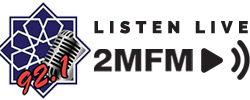How many types of najas-filth are there?
Among what is considered najas-filthy are urine, feces, blood, puss, vomit, alcohol, and the maytah , including its bones and hair. The corpse of a dead human is not najas-filthy.
The najas-filth is divided into two types: detectable (^ayniyyah) and undetectable (hukmiyyah).
Detectable (^Ayniyyah) Najas-filth: This is the najas-filth the entity, color, taste, or smell of which is detectable, such as a drop of blood on clothing. This najas-filthy area can be purified by pouring water on it, which is pure and purifying, until the entity and properties of the najas-filth are removed.
Undetectable (Hukmiyyah) Najas-filth: This is the type of najas-filth that no longer has a color, taste, or smell. An example is urine that has dried on clothing without leaving any of its properties, i.e., this dry urine no longer has a smell, color, or taste. The place that is contaminated with this najas-filth can be purified by pouring purifying water on it.
If the najas-filth which is from a dog or a pig, such as their saliva, comes on the hands or clothing or any item of a person, this najas-filthy place is purified by washing it with purifying water, seven times, one of which has to be mixed with purifying soil.
Benefit: All live animals are considered pure (tahir), except for the dog and pig, the offspring of each, and their hybrids.






